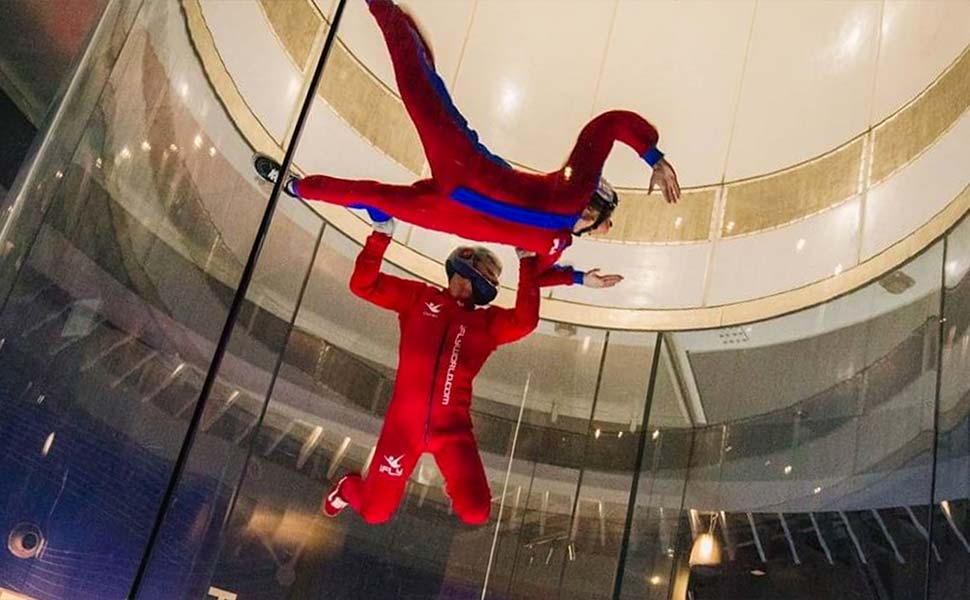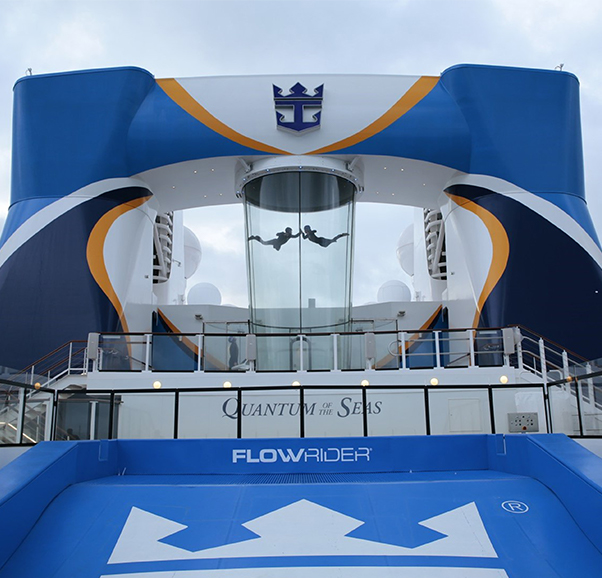What Your Dreams of Flying Really Mean
It’s clear. Those dreams mean you need to visit the nearest iFly to simulate your own high-adventure skydiving. No experience necessary.

The Client: iFLY, LLC
iFly produces modern skydiving wind tunnels (both standard and custom) designed for the general public. You enjoy the completely immersive experience of skydiving without ever having to pack a parachute, pull a ripcord, or jump out of a perfectly good airplane.

The Challenges Were Many: We Earned Our Wings
Deaton helped take projects from the raw brainstorming and whiteboard stage… to collaborating with fabricators and suppliers for design of manufacturable and cost-effective components…across nearly all 9 generations of iFly Tunnel Systems.
Here are just some of the challenges we researched and helped iFly and its suppliers overcome:
- Airflow sealing methods and solutions.
- Integrated sound dampening and conditioning (chilled turning vanes provide “air conditioning”).
- Assembly, lifting, and installation challenges.
- Sealed joints within and sealed flexible joints between critical components.
The Solution: Ideas Taking Flight For 20 Years
We at Deaton have had the pleasure of working with iFly for 20 years. We’ve been involved and relevant at every phase, whether working on their standard designs or providing services for many of their custom projects, including the world’s largest wind tunnel and recirculating tunnels on cruise ships.
- The Concept “What If?” Phase: Whiteboard sketches and brainstormed conceptual designs were circulated among a diverse team of fabricators, control system and structural engineers, architects, aerodynamicists and owner groups to conceptualize machines.
- Ideas Meeting Real-World Constraints: We worked with fabricators using best practices to design manufacturable and cost-effective components to match complex geometry of desired airflow, and modular design for loading into shipping containers for transport around the world.
- Getting Real and Realer: Used hand calculations, finite element analysis (FEA), and engineering judgement to optimize and validate designs. Developed methods to predict and evaluate component strengths, quantify internal/external loads and component responses. Created loading and interface documents for interfaces to, and loads imparted upon, building structure.
-
Common Components, Standard Procedures, Documentation
- Configurable components used in multiple product offerings.
- Generated or revised standard fabrication and procedural documents.
- Developed requirements, testing, and acceptance criteria for supplier coatings and finishes.
- Developed specification documents for critical machine components.
- Assisted with integration of product design management system.
- Installation and Assembly: Worked with installers to improve processes on standard offerings. Worked with fabricators to improve component designs and perform cost analyses and comparisons. Created manufacturing drawings and sequenced assembly instructions to ensure the machines can be assembled.
Engineering Highlights:
THE LARGEST WIND TUNNEL IN THE WORLD
Designing the largest wind tunnel in the world comes with special challenges and considerations.
- 32 foot in diameter and 104 foot heigh in the flight chamber.
- A machine that dwarfs all other designs, including a 10-story structure with 16 fans generating more than 7 mega-watts of power.
- Huge parametric models in SolidWorks including thousands of unique components. Worked with aerodynamicists to develop multi-story machine components that met airflow requirements. Designed components with access for maintenance.
- Load-bearing supports and tensioning methods integral to the airflow space, and fairings and bull-noses to smooth transitions and provide quality airflow.
- Prepared documentation and participated in first-article approval and prototype/mock assembly of selected components.
- Worked with structural engineers to provide machine loads for, and to accept loads imparted by, the structure. DE provided critical analysis and simulation of loads through machine components to support enormous wind load forces on an order of magnitude larger than previous designs.

A WIND TUNNEL ON A CRUISE SHIP
- Worked with challenging architectural and structural interfaces.
- Developed solutions for critical geometry and weight-loading requirements with limited space availability.
- Develop and implement new integrated component structure support features and methods.
- Developed and implemented new orientations for legacy components in design and solved challenges associated.
- Developed and implemented seals for component interfaces.
- Developed and implemented accessibility features for maintenance.
- Identified corrosion and safety issues and provided features and guidance for prevention.


